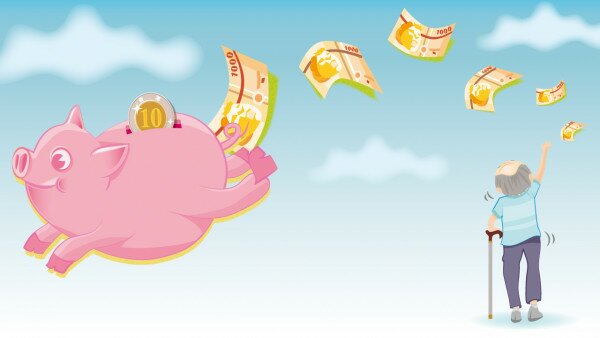There are plenty insurance products available in the market. Among them, the endowment insurance plan is a saving tool preferred by many consumers. The Consumer Council reminds consumers that an endowment plan is not a pure savings product. The expected maturity benefits of some participating plans may include non-guaranteed portion, i.e. it is possible that the maturity payout could be lower-than-expected. Also, many endowment plans are denominated in foreign currency. Consumers are cautioned not to focus solely on potential returns, but also possible losses brought by fluctuation in exchange rates.
While many consumers regard endowment plans as long-term saving plans, they are practically insurance plans with savings element. Endowment insurance, being an insurance product, differs from savings deposit as part of the premium is paid for insurance protection. The policyholder may receive a payout equivalent to or higher than the premium paid only after a period of time. For example, for a 5-year paid policy that offers 10-year protection, if the policyholder surrenders in the 4th year, the guaranteed cash value will only be one-eighth of the total premium paid.
To better understand the endowment plans offered in the market, the Council approached 19 insurance companies and a total of 14 endowment plans from 7 companies were collected for review. The Council found huge diversity among plans in areas of payment tenure, guaranteed payback period, life insurance protection period, insured amount and minimum premium requirement. Consumers are advised to compare and identify suitable plans that meet their needs.
Consumers also have to be vigilant about the projected returns shown in promotional materials or highlighted in policy proposals prepared by intermediaries, which do not mean "guaranteed returns". This is particularly true for participating plan, whereby the policy dividend is subject to the profit and investment return of the insurer and may not be the same as mentioned in the promotional leaflet or projected in the policy proposal. In fact, the amount of dividend paid is at the sole discretion of the insurance company while its rate is not guaranteed either. The insurance company can make subsequent adjustments even after a policy is issued.
Among the reviewed, payment tenure of the endowment plans range from 3, 5, 10 to 20 years. The guaranteed payback period, that is when the guaranteed cash value of the payout is higher than the total premium paid, is defined based on the length of payment tenure. Take one endowment plan which provides options for payment tenures at 6, 10, 15 or 20 years as an example, its guaranteed payback period could be as long as 15, 17, 21 or 24 years respectively.
As the example shown, some plans have a relatively longer guaranteed payback term. Before purchasing an endowment plan, consumers should consider their needs and affordability, and whether the money being locked-in would be needed for other purposes before the end of payback term. If the policy is terminated before maturity, the surrender value will be substantially less than the total premium paid.
As endowment plans usually have a lower sum insured and a shorter policy term, requirements for health assessment tends to be lenient. Among the 14 plans reviewed, 13 do not require medical examination. However, 8 of the 13 plans will only grant exemption when the premium or insured amounts meet certain criteria.
Besides, only 1 of the 14 plans charges in Hong Kong dollar, and the remaining are either denominated in Renminbi (RMB) or US dollars, or provide the option of choosing policy currency. Consumers should be wary that endowment in foreign currency may yield a higher rate of return, but it is also exposed to the risk of exchange rate fluctuations.
For example, the exchange rate of RMB began to soar in 2005, it reached the peak in January 2014 when the rate against HK dollar was 1:1.27. Since then, the exchange rate of RMB against HK dollar has declined by 6% in the past two years to 1:1.19. When coinciding a currency devaluation, policyholders might suffer losses when cashing out maturity benefit.
Furthermore, some currencies, such as the RMB, are not freely convertible. Consumers should beware of the time needed to exchange currency for payment instalments. Like-wise, insurance companies may also need time to convert among different currencies before issuing compensation or benefits.
Consumers should note following suggestions before subscribing an endowment plan:
- Determine financial goals, i.e. whether any life protection need and other goal (such as education or wedding), and based on which to determine the appropriate endowment plan tenor and the sum insured
- Assess ability to pay and longer term financial situation. If a sizable amount of cash is expected to be spent in a short term, think twice before subscribing to avoid possible loss caused by early surrender.
- All life insurance products provide a cooling-off period of 21 days once the policy is delivered or after a notice is issued informing the policyholder or his/her representative about the availability of the policy, whichever is earlier. Fully utilize the cooling-off period to examine details of the policy. If the policy purchased is not suitable, inform the insurer to cancel the policy before end of the cooling-off period;
- Monitor performance of the endowment policy regularly, for example, whether the return is promising and meets expectation.
The Consumer Council reserves all its right (including copyright) in respect of CHOICE magazine and Online CHOICE.




